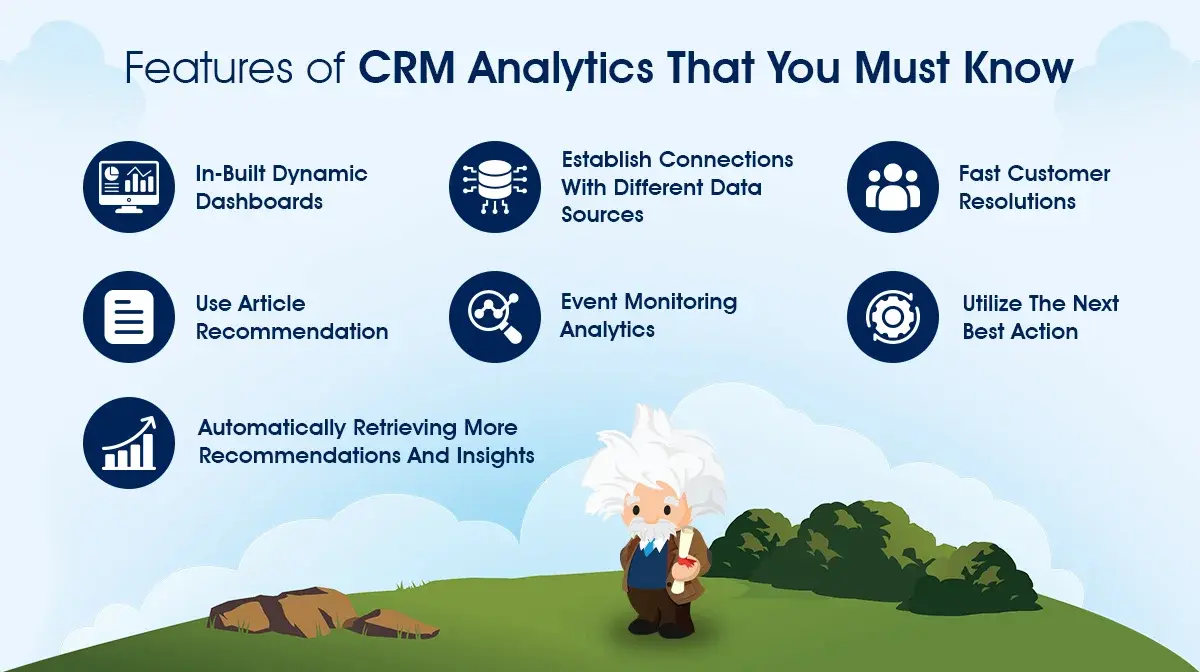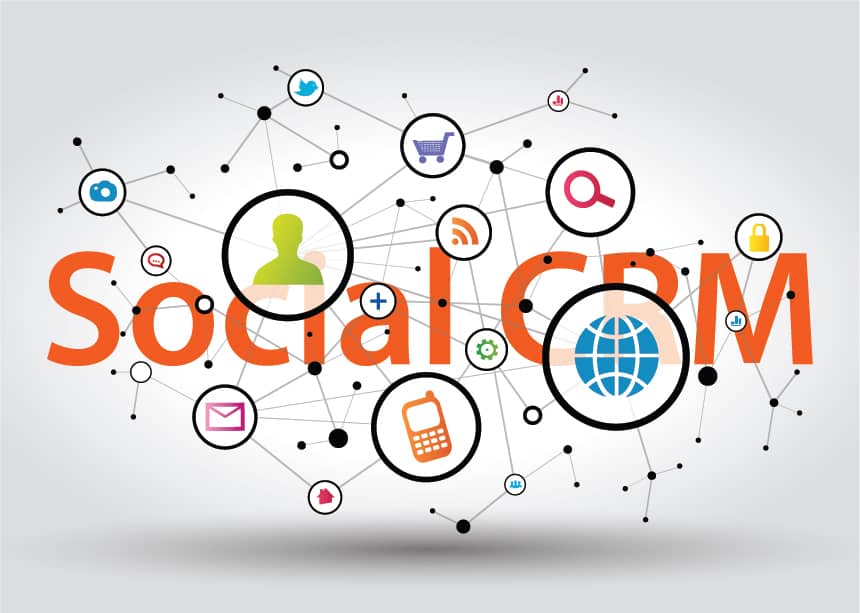
Small Business CRM Accessibility in 2025: A Deep Dive
The year is 2025. Small businesses, once constrained by clunky, expensive Customer Relationship Management (CRM) systems, now thrive with agile, accessible solutions. The digital landscape has evolved, and the demands on entrepreneurs are higher than ever. To stay competitive, small businesses require tools that are not just functional, but also seamlessly integrated, user-friendly, and, above all, accessible. This article explores the evolving world of CRM accessibility for small businesses, examining current trends, predicting future developments, and providing actionable insights to help entrepreneurs navigate the complexities of customer relationship management.
Understanding the Fundamentals of CRM
Before delving into the specifics of accessibility, it’s crucial to understand the core functions of a CRM. At its heart, a CRM is a technology that helps businesses manage and analyze customer interactions and data throughout the customer lifecycle, with the goal of improving business relationships and driving sales growth. A well-implemented CRM system can:
- Centralize Customer Data: Consolidate all customer information, interactions, and history in a single, accessible location.
- Enhance Communication: Facilitate effective communication through various channels, including email, phone, and social media.
- Automate Tasks: Automate repetitive tasks, such as data entry, email marketing, and lead nurturing.
- Improve Sales and Marketing: Provide insights into customer behavior, enabling targeted marketing campaigns and improved sales strategies.
- Boost Customer Service: Offer a 360-degree view of the customer, empowering support teams to provide personalized and efficient service.
For small businesses, a CRM is not just a luxury; it’s a necessity. It levels the playing field, allowing them to compete with larger enterprises by providing the same level of customer service and data-driven decision-making.
The Current State of CRM Accessibility
Accessibility in CRM is not just about user-friendliness; it’s about ensuring that the system is usable by everyone, regardless of their abilities. This includes individuals with disabilities, those using assistive technologies, and those with varying levels of technical proficiency. Currently, the accessibility landscape in the CRM space is a mixed bag. While many vendors are making strides in compliance with accessibility standards like WCAG (Web Content Accessibility Guidelines), there’s still room for improvement.
Here are some key aspects of current CRM accessibility:
- WCAG Compliance: Many CRM vendors strive to adhere to WCAG guidelines, ensuring that their platforms are perceivable, operable, understandable, and robust. This includes features like alternative text for images, keyboard navigation, and sufficient color contrast.
- Mobile Accessibility: With the increasing use of mobile devices, CRM vendors are focusing on mobile accessibility, ensuring that their platforms are responsive and usable on smartphones and tablets.
- Customization Options: Some CRM systems offer customization options that allow users to tailor the interface to their specific needs, such as adjusting font sizes, color schemes, and screen layouts.
- Integration with Assistive Technologies: Integration with screen readers, voice recognition software, and other assistive technologies is becoming more common, but there is still a need for better compatibility.
Despite these advancements, challenges remain. Some CRM systems can be complex and overwhelming for users with limited technical skills. Furthermore, the cost of some CRM solutions can be prohibitive for small businesses, particularly those with limited budgets.
Accessibility Challenges Faced by Small Businesses
Small businesses often face unique challenges when it comes to CRM accessibility. These challenges can be broadly categorized as follows:
- Cost: The cost of CRM software can be a significant barrier, especially for startups and small businesses with tight budgets.
- Complexity: Many CRM systems are complex and require extensive training and onboarding, which can be time-consuming and costly.
- Lack of Technical Expertise: Small businesses may lack the internal IT expertise needed to implement and maintain a CRM system.
- Integration Issues: Integrating a CRM with existing business systems, such as accounting software and e-commerce platforms, can be challenging.
- Limited Customization: Some CRM systems offer limited customization options, which can make it difficult to tailor the system to the specific needs of a small business.
These challenges underscore the need for CRM solutions that are affordable, easy to use, and readily adaptable to the specific needs of small businesses.
The Rise of Accessible CRM in 2025: Key Trends
Looking ahead to 2025, several key trends are poised to reshape the landscape of CRM accessibility for small businesses. These trends are driven by technological advancements, evolving customer expectations, and a growing emphasis on inclusivity.
1. AI-Powered Accessibility
Artificial intelligence (AI) and machine learning (ML) will play a pivotal role in enhancing CRM accessibility. AI-powered features will include:
- Intelligent User Interfaces: AI can personalize the user interface based on individual preferences and needs, such as adjusting font sizes, color schemes, and screen layouts.
- Automated Content Generation: AI can automatically generate alternative text for images and captions for videos, making content more accessible to users with visual impairments.
- Voice-Controlled Navigation: Voice recognition technology will enable users to navigate CRM systems using voice commands, providing a hands-free experience.
- Predictive Accessibility: AI can anticipate accessibility needs and proactively adjust the system to meet those needs, such as automatically increasing font sizes for users with vision impairments.
AI will not only make CRM systems more accessible but also more efficient and user-friendly, ultimately improving the customer experience.
2. No-Code/Low-Code CRM Platforms
No-code/low-code platforms will empower small businesses to customize and deploy CRM solutions without the need for extensive coding knowledge. These platforms will offer:
- Drag-and-Drop Functionality: Users can easily customize the user interface and workflow using drag-and-drop functionality.
- Pre-built Integrations: Seamless integrations with popular business applications, such as accounting software and e-commerce platforms, will simplify the implementation process.
- Customizable Templates: Pre-designed templates for various business processes, such as lead management and customer service, will accelerate the deployment process.
- Automated Workflow Creation: Automated workflow creation tools will enable businesses to automate repetitive tasks and streamline their operations.
No-code/low-code platforms will democratize CRM accessibility, making it easier and more affordable for small businesses to implement and customize CRM solutions.
3. Enhanced Mobile Accessibility
With the increasing use of mobile devices, mobile accessibility will be a top priority for CRM vendors. This will involve:
- Responsive Design: CRM systems will be designed to be fully responsive, adapting to different screen sizes and devices.
- Voice Control: Voice control features will enable users to interact with the CRM system hands-free on mobile devices.
- Simplified User Interfaces: Mobile interfaces will be simplified and streamlined, with a focus on ease of use and intuitive navigation.
- Offline Access: CRM systems will offer offline access to key data and functionality, allowing users to work even when they are not connected to the internet.
Enhanced mobile accessibility will enable small businesses to manage customer relationships on the go, increasing productivity and responsiveness.
4. Inclusive Design Principles
Inclusive design principles will guide the development of CRM systems, ensuring that they are usable by people of all abilities. This will involve:
- Accessibility by Design: Accessibility will be considered from the outset of the design process, rather than as an afterthought.
- User Testing with Diverse Groups: CRM systems will be tested with users with disabilities and diverse backgrounds to identify and address accessibility issues.
- Feedback Mechanisms: Users will be able to provide feedback on accessibility issues, allowing vendors to continuously improve their platforms.
- Accessibility Guidelines and Best Practices: Vendors will adhere to accessibility guidelines and best practices, such as WCAG, to ensure that their platforms are accessible.
Inclusive design will ensure that CRM systems are truly usable by everyone, fostering a more inclusive and equitable digital environment.
5. Integration with Emerging Technologies
CRM systems will integrate with emerging technologies, such as:
- Virtual Reality (VR) and Augmented Reality (AR): VR and AR can be used to create immersive customer experiences and provide virtual training and support.
- Blockchain: Blockchain technology can be used to secure customer data and ensure data privacy.
- Internet of Things (IoT): IoT devices can be integrated with CRM systems to collect data on customer behavior and preferences.
Integration with emerging technologies will enhance the functionality and capabilities of CRM systems, providing small businesses with new ways to engage with their customers.
Choosing the Right CRM for Your Small Business in 2025
Selecting the right CRM system is a critical decision for any small business. Here’s what to look for in 2025:
- Accessibility Features: Prioritize CRM systems that offer robust accessibility features, such as WCAG compliance, keyboard navigation, and screen reader compatibility.
- User-Friendliness: Choose a CRM system that is easy to use and navigate, with a clean and intuitive user interface.
- Customization Options: Look for a CRM system that offers customization options, allowing you to tailor the system to your specific needs.
- Integration Capabilities: Ensure that the CRM system can integrate with your existing business systems, such as accounting software and e-commerce platforms.
- Mobile Accessibility: Choose a CRM system that offers a responsive and accessible mobile experience.
- Scalability: Select a CRM system that can scale with your business as it grows.
- Pricing and Value: Consider the pricing and value of the CRM system, ensuring that it fits within your budget and provides a good return on investment.
- Customer Support: Choose a CRM vendor that offers excellent customer support, including training, documentation, and technical assistance.
By carefully considering these factors, small businesses can choose a CRM system that meets their specific needs and helps them build strong customer relationships.
Accessibility Best Practices for Small Businesses
Implementing a CRM system is just the first step. Small businesses must also adopt best practices to ensure that their CRM is accessible and effective:
- Provide Training: Train employees on how to use the CRM system and its accessibility features.
- Conduct Regular Audits: Regularly audit the CRM system to identify and address any accessibility issues.
- Gather User Feedback: Collect feedback from users on their experience with the CRM system and use this feedback to improve accessibility.
- Stay Up-to-Date: Stay up-to-date on the latest accessibility guidelines and best practices.
- Promote Accessibility: Promote the importance of accessibility within your organization.
- Utilize Alternative Text: Ensure all images have descriptive alt text.
- Use Clear Headings: Structure content with clear and concise headings.
- Provide Sufficient Color Contrast: Ensure adequate color contrast between text and background.
- Offer Keyboard Navigation: Make sure the system can be fully navigated using a keyboard.
By following these best practices, small businesses can create a more accessible and inclusive CRM experience for their employees and customers.
The Benefits of Accessible CRM for Small Businesses
Investing in an accessible CRM system offers numerous benefits for small businesses:
- Improved Customer Satisfaction: An accessible CRM system allows you to provide better customer service, leading to increased customer satisfaction.
- Increased Sales: By understanding your customers better, you can tailor your sales and marketing efforts, leading to increased sales.
- Enhanced Employee Productivity: An accessible CRM system is easier to use, which increases employee productivity.
- Reduced Costs: By automating tasks and streamlining workflows, an accessible CRM system can reduce costs.
- Improved Brand Reputation: Demonstrating a commitment to accessibility can enhance your brand reputation and attract new customers.
- Wider Market Reach: Accessible CRM systems enable businesses to reach a broader audience, including people with disabilities.
- Legal Compliance: Adhering to accessibility standards can help businesses comply with legal requirements.
These benefits underscore the importance of investing in an accessible CRM system for small businesses.
The Future is Now: Embracing CRM Accessibility
The future of CRM accessibility for small businesses is bright. By embracing the trends outlined in this article, small businesses can position themselves for success in the years to come. Accessibility is no longer just a nice-to-have; it’s a necessity. It’s about creating a level playing field, fostering inclusivity, and ensuring that everyone can benefit from the power of customer relationship management.
The journey to accessible CRM may seem daunting, but the rewards are well worth the effort. By prioritizing accessibility, small businesses can build stronger customer relationships, drive sales growth, and create a more inclusive and equitable digital environment. The time to act is now. Embrace the future of CRM accessibility and unlock the full potential of your business.


